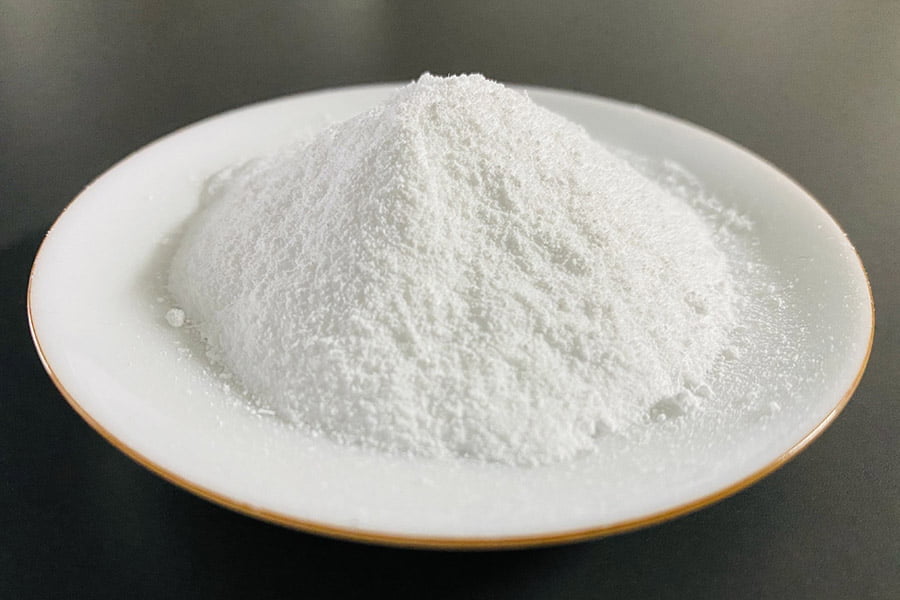White Microsilica (Zirconium Silica Fume)
White Microsilica, also known as Zirconium Silica Fume or 99% undensified silica fume. Currently, the white silica fume available from Henan Superior Abrasives is 99% undensified silica fume, SiO2 >94%, ZrO2 <2% of silica fume.
White Microsilica has good fluidity enhancement characteristics, and it can be well dispersed under the action of dispersant. The fine particle size of silica fume can improve the particle distribution in refractory castables, fill the voids between large particles, increase the density of castables, reduce the void rate, and make the castables self-flowing with less water demand. It is currently used in large quantities in high strength concrete, refractory materials, insulation materials, chemical coatings, oil well cement and other fields.
White Microsilica is an indeterminate micro powder with spherical structure, which has high purity, high whiteness, high activity, high thermal conductivity, high insulation and high weather resistance, etc.. White silica fume can be widely used in concrete, refractory materials, wall materials, cement products, mortier, flooring, chemical industry and other important fields used in special projects.
Demander un devis personnalisé
Caractéristiques
- High purity, high whiteness, adjustable and controllable particle size, uniform distribution.
- Good weather resistance, good chemical stability, except for hydrofluoric acid, strong alkali reaction, does not react with any other substances.
- High hardness and high sex of silica fume improve the scratch resistance of the coating film.
- Low dielectric constant and dielectric loss, is the ideal filling material for electronic and electrical products.
- Low oil absorption, low viscosity, good dispersibility and fluidity.
Applications
- High-Performance Concrete: White microsilica is used to produce high-performance concrete with improved strength, durabilité, and resistance to chemical attack.
- Matériaux réfractaires: Due to its high purity and low iron content, zirconium silica fume is an essential ingredient in the production of refractory materials such as bricks, castables, and monolithic linings.
- White Cement: White microsilica is used to produce high-purity white cement, which has applications in architectural and decorative concrete.
- Ceramics: Zirconium silica fume is used in the production of advanced ceramics, such as zirconia-based ceramics, where it can act as a sintering aid and enhance the final properties of the product.
- Repair Materials: White microsilica can be used in repair materials to improve bonding, strength, and durability.
- Cimentation de puits de pétrole: Zirconium silica fume can be added to oil well cement to enhance its performance by improving its mechanical properties, reducing permeability, and increasing resistance to chemical attack in the harsh downhole environment.
- Precast Concrete: White microsilica can be used in the production of precast concrete elements, where it contributes to improved strength, durabilité, and surface finish.
- Shotcrete and Gunite: Zirconium silica fume can be added to shotcrete and gunite mixtures to enhance their strength, adhesion, and resistance to cracking, making them suitable for applications in tunneling, mining, and slope stabilization.
- Self-Compacting Concrete (SCC): White microsilica’s ability to improve workability and rheological properties makes it suitable for use in self-compacting concrete, which requires minimal vibration and compaction during placement.
- Fiber-Reinforced Concrete: The addition of zirconium silica fume to fiber-reinforced concrete can enhance the bond between fibers and the cementitious matrix, leading to improved mechanical properties and durability.
Paramètres
| Project | Assay value | Guarantee value |
|---|---|---|
| Si02(%) | 95 | 94 |
| Zr02(%) | 2 | 2-4 |
| Fe203(%) | 0.2 | 0.3 |
| Al203(%) | 0.1 | 0.2 |
| Na20(%) | 0.01 | 0.01 |
| K20(%) | 0.01 | 0.02 |
| Ca0(%) | 0.001 | 0.002 |
| MgO(%) | 0.003 | 0.005 |
| Ti02(%) | 0.04 | 0.07 |
| Loss on ignition(%) | 0.3 | 0.5 |
| whiteness | 90 | 88 |
| aire de surface spécifique(m2/g) | 9 | 6-15 |
| granularityD50(u) | 1.3 | 1–2 |
| PH | 3 | 2–4 |
FAQ
Contactez-nous
Obtenez un devis gratuit
Fondé en 2001, HSA est l'un des principaux fournisseurs de fumées de silice et d'abrasifs en Chine, et également la source premium de produits hautes performances pour les industries du béton et des abrasifs.








